(SPOT.ph) They say that you can tell the history of a certain culture by the kind of art that it has produced. But what if it was the other way around? What if in our attempt to understand a group of people, we find ourselves creating and producing art to concretize the stories and accounts of an often-overlooked society? This is the case for Cian Dayrit’s Busis Ibat Ha Kanayunan (Voices from the Hinterlands) which is on display at the Bellas Artes Outpost in Makati.
In this exhibit, Dayrit chronicles how the Ayta communities in Bataan engage with the world around them. He cites historical facts and mythology to open doors for discussion and understand the complexities and struggles of indigenous people in a country where culture has been heavily influenced by hundreds of years of colonization. To add to that, we have a nation where efforts to bridge the gap between the indigenous peoples and the outside communities are often neglected and ignored.
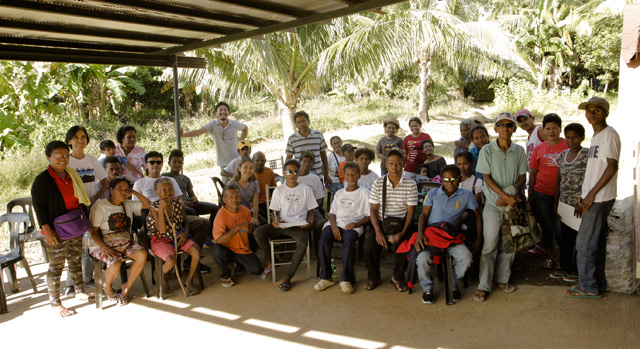
Cian Dayrit with the Ayta community in Bataan
In May 2017, Dayrit started his artist residency at the Bellas Artes Projects in Bataan and he immediately became curious about the history that the province holds. He later realized that much of the historical accounts available and accessible to the public are mostly about the role of Bataan in World War II, and that records and documentations on pre-war history were limited.
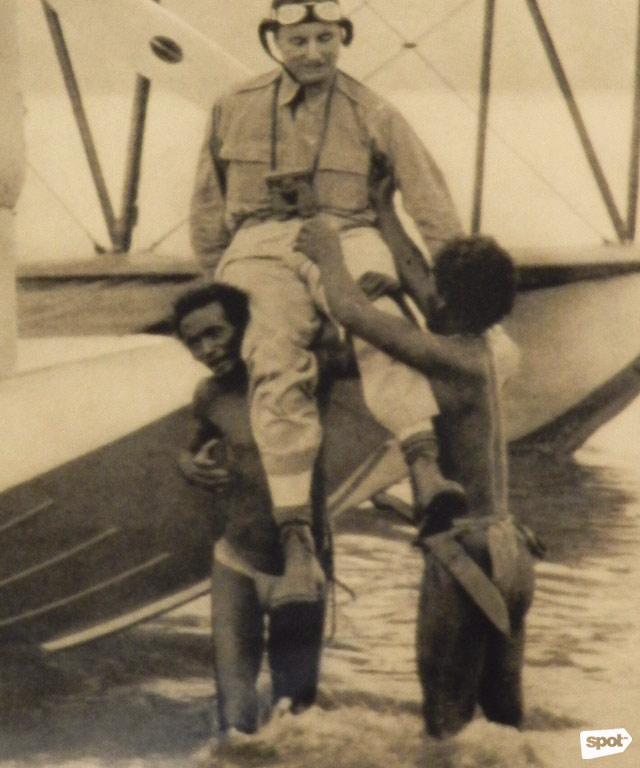
In his search, he came across the indigenous communities of Aytas living in the province and decided to uncover their local history. He found that there are two tribes living in 18 communities: the Ayta Ambala and the Ayta Magbukon. As he has worked with indigenous communities in the past, Dayrit was startled by the lack of awareness about the Aytas of Bataan. It was then that he decided to provide a platform for the Aytas to tell their own stories.
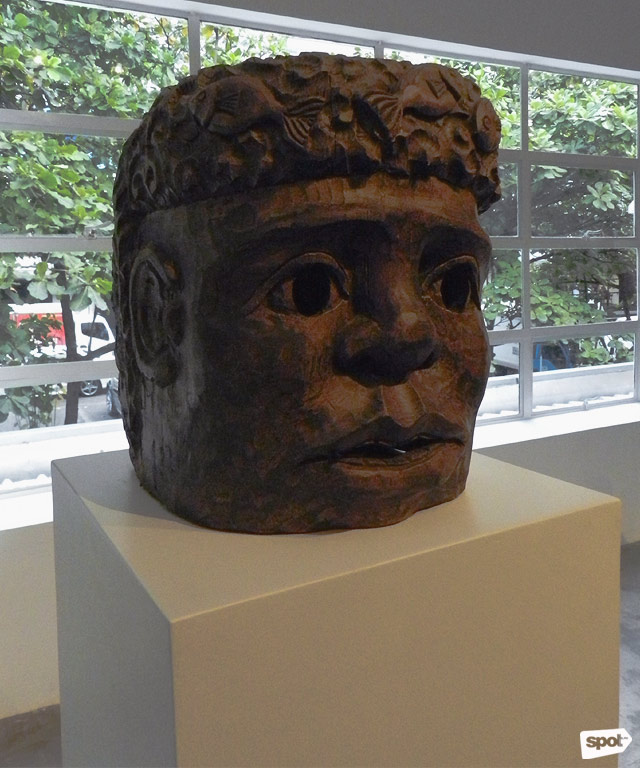
“Mask, Ayta”
Voices from the Hinterlands
Busis Ibat Ha Kanayunan begins with a parade of wooden masks. Each mask is carved with an image of a colonial character or an issue that has affected the Aytas and their identity throughout history. Among them, a mask representing an Ayta with the carved image of a fish in his hair tells the story of how most of the men from these tribes worked for the Americans in exchange for cans of sardines. When their work was done, they would pour the sauce from the sardines on their head—a symbol of their fortune.

A working timeline inscribed on the wall with the artist’s own handwriting taps into the curiosity of the viewer. Some of the events were from recorded documents, but some were from narrations of the elders. This proves just how much of what we know of our history is based on what was taught to us. Should we dismiss oral stories because of their lack of documentation as mere fiction, or should we investigate further? But what right does it give us, outsiders, to doubt and challenge the unwritten history of a certain society?
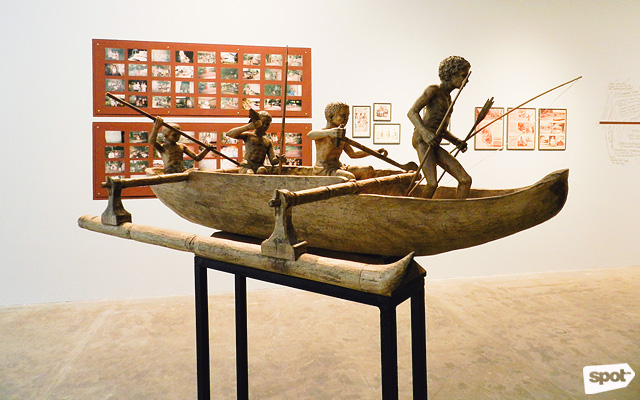
Boat sculpture made by Dayrit with the woodworkers of Las Casas Filipinas de Acuzar
Elsewhere in the exhibit is a wooden sculpture of a boat carrying Aytas as they fish, inspired by a photo from the Lopez Museum Library Archives showing that, in the past, the Aytas had the capacity to fish as they used to live in coastal towns. That is, until they were forced to migrate inland.
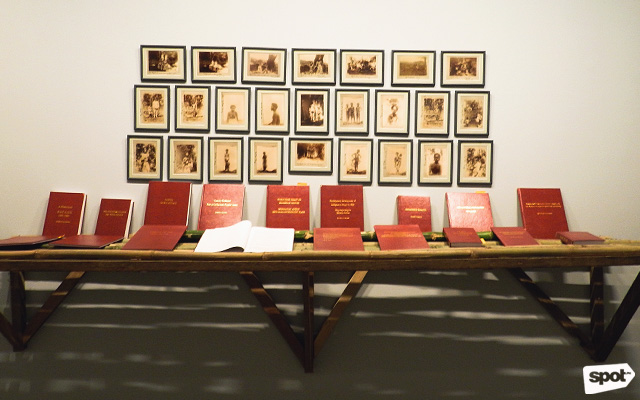
"Outside Looking In"

“Danger Do Not Operate”
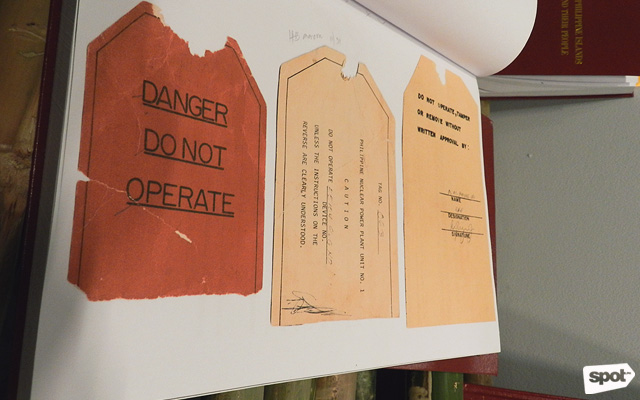
“Danger Do Not Operate” (detail)
Also on display are published writings, academic research, and literature relevant to Bataan and the Ayta communities in an installation that looks like a mini-library. A hardbound book entitled, “Danger Do Not Operate,” contains documents about the Bataan Nuclear Power Plant. The two-billion-dolar project constructed during the Marcos regime was never used due to safety concerns.
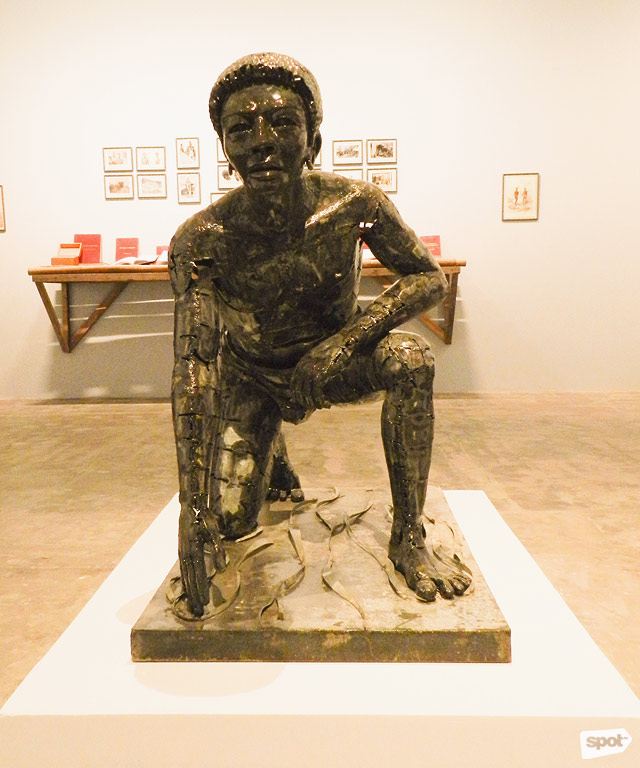
Apo Alipon
The Legend of Apo Alipon and the Ancestral Domain
Standing as the centerpiece for the show is an artistic rendition of Apo Alipon, a slave who later led his people to oust colonizers. He continues to inspire the Aytas to never let go of ancestral claims on their lands.
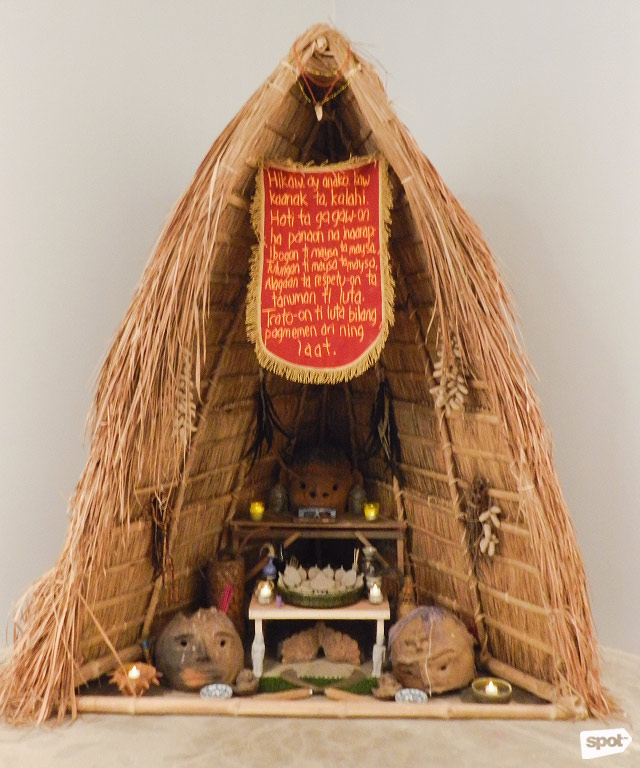
“Palyo Noon, Ngayon, at Mamaya”
This message becomes the center of another installation, “Palyo Noon, Ngayon, at Mamaya.” It features objects that serve as objects of worship for the Aytas. Apo Alipon’s message to his people is embroidered on a piece of cloth that hangs above.
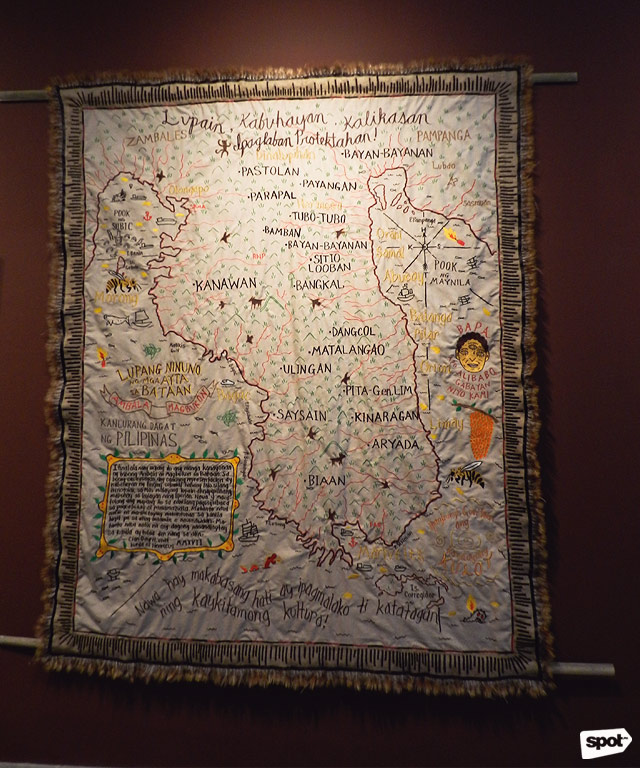
"Lupang Ninuno ng mga Ayta ng Bataan"
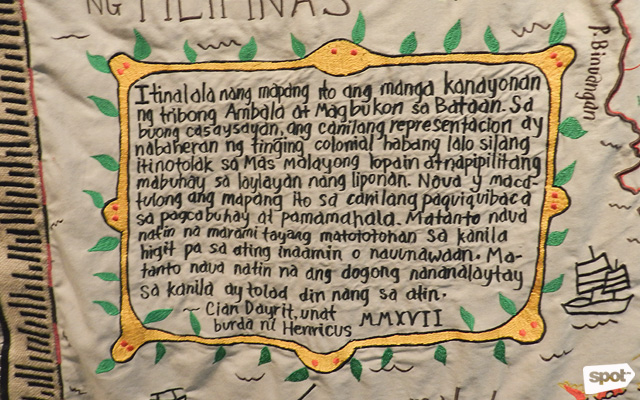
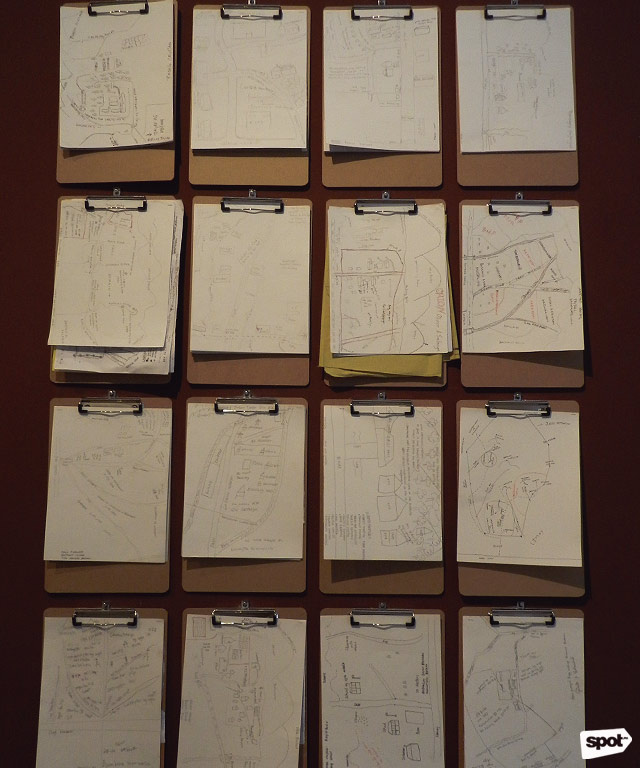
Counter-maps made by the Aytas
Mapping and Counter-Mapping
Similar to his previous works, Dayrit has produced a large map of Bataan made from tapestry to illustrate the geography where the Ayta communities live. He also conducted a counter-mapping workshop, giving them a platform to tell their history through maps.

“Kulot” versus “Unat” and the Future
Part of Busis Ibat Ha Kanayunan is a series of talks inviting the audience to participate and listen to the conditions of the Aytas in Bataan and how our existence has affected theirs and vice versa. Issues surrounding discrimination were brought up, especially how Aytas—referred to as the "kulot"—are often subjected to bullying and unfair treatment.
Another issue raised by the community is exploitation through cultural appropriation. Some researchers and cultural workers become interested with them as subjects but deprive them of the full knowledge of what the studies entail.
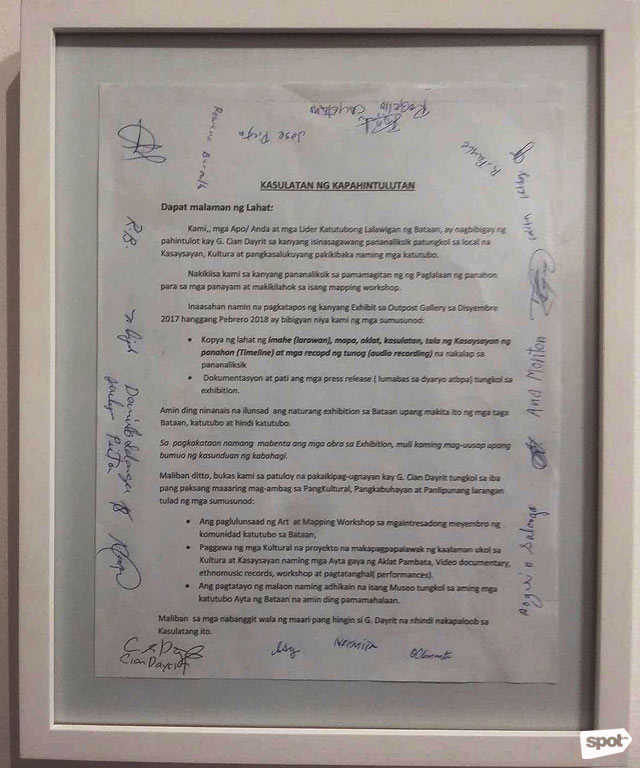
Free and Prior Informed Consent
To avoid this often-ignored struggle of indigenous communities, Dayrit carefully explained his art project to the tribe elders and members and gave them the choice to participate or not. He also provided them a copy of a Free and Prior Informed Consent (a requirement of the National Commission on Indigenous Peoples for academic researchers), the original of which was neatly framed and displayed next to the wall text written by BAP curator Diana Campbell Betancourt.
For Dayrit, this is the most important piece in his exhibit. It proves that our difference should not prevent us from working together if we have the same respect for one another and a common interest that resists any form of exploitation. As Campbell Betancourt beautifully puts it in her gallery notes, "Dayrit speaks with, rather than for, the 18 Ayta communities of Bataan province, using art as a vehicle to tell their stories of origin and of contact with the world around them."
Busis Ibat Ha Kanayunan (Voices from the Hinterlands) runs until January 23 at Bellas Artes Outpost, The Alley at Karrivin, Makati. For more information, visit Bellas Artes' website.
[ArticleReco:{"articles":["72522"]}]

Post a Comment